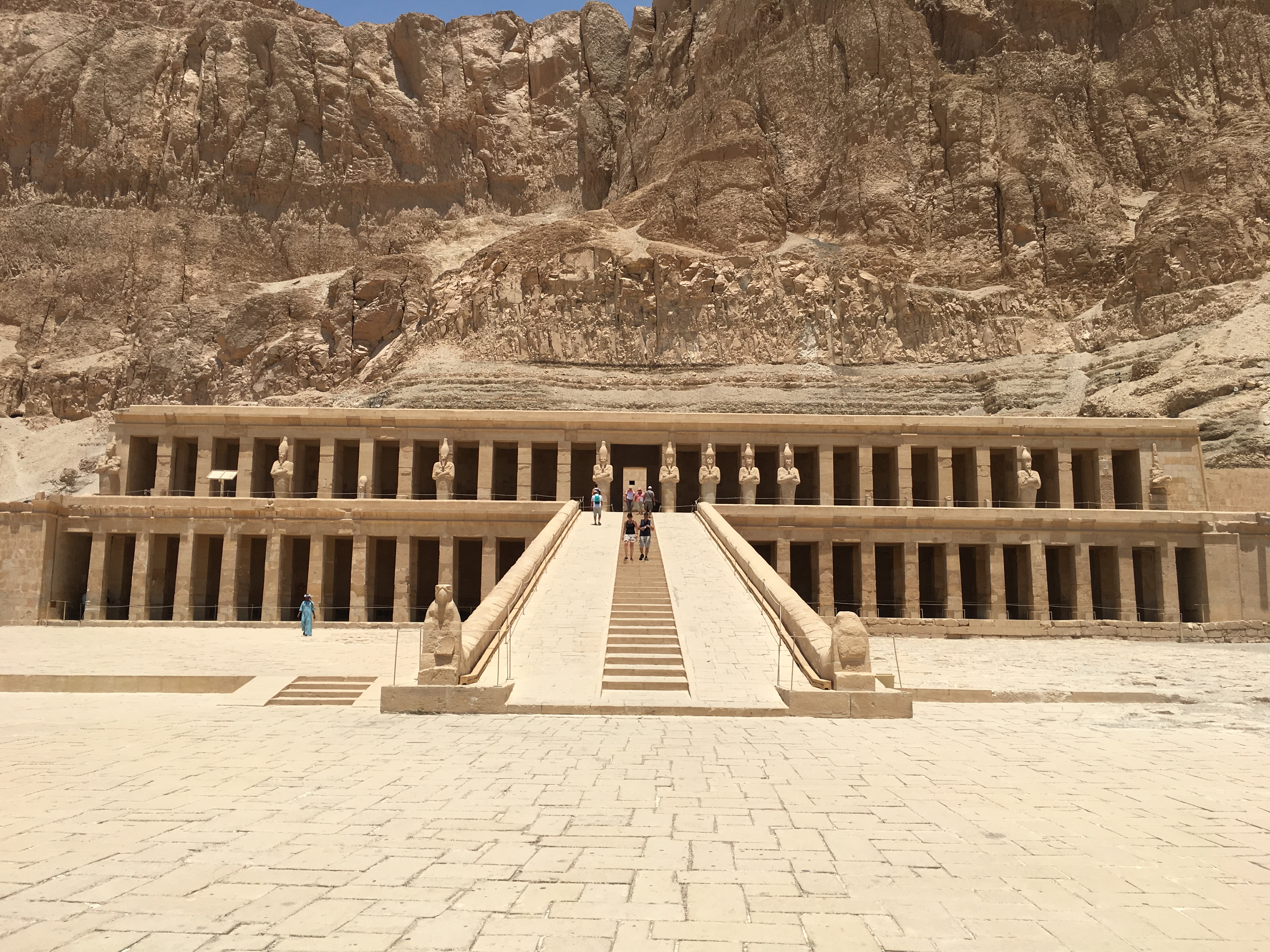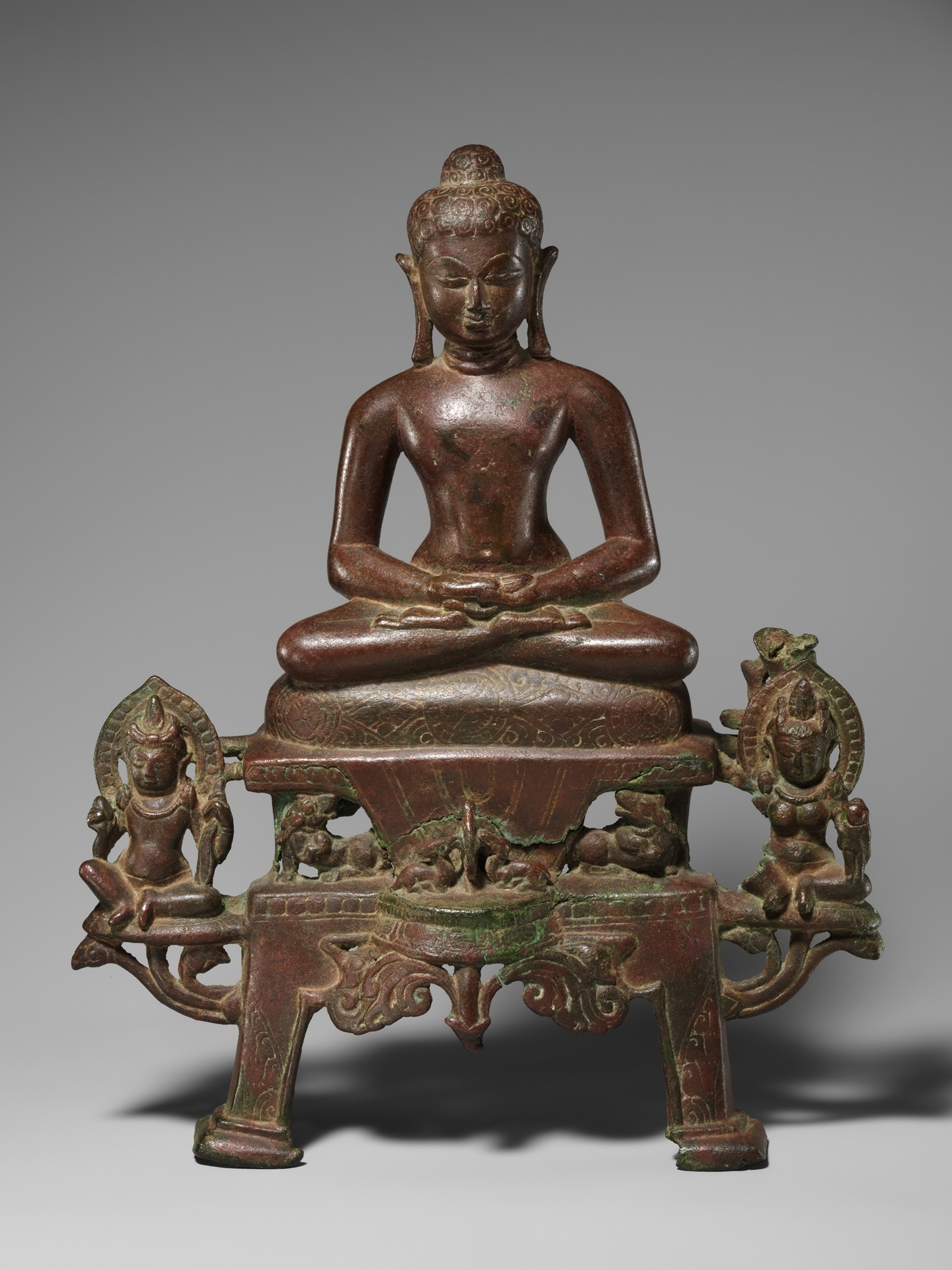|
Ostracon Of Senemut
The Ostracon of Senemut is an ancient Egyptian limestone ostracon which dates from the reign of Hatshepsut (1479 BC – 1458 BC), in the 18th Dynasty. Design The ostracon portrays Senemut, a courtier of Hatshepsut. It is a ''figured-ostracon'', of ''portrait'' type with heads only. The ceramic is made of white limestone, with dimensions of approximately 3 in (0.8 dm) by 7 in (1.8 dm). The Ostracon of Senemut is currently part of the collection at the Metropolitan Museum of Art. Traditionally, ostraca in Egypt were used for artist's sketchings, cartoons-caricatures, letter documents, school–practice writing, and graffiti. Ostraca depicting Senenmut File:Artist's Gridded Sketch of Senenmut MET 36.3.252 EGDP013666.jpg, Ostracon found from the dump below Senenmut's tomb chapel (SAE 71) thought to depict his profile. Now in the Metropolitan Museum. Image:Ostracon-ThoughtToDepictSenenmut03_MetropolitanMuseum.png, Ostracon found from the dump below Senenmut's tomb chapel (SAE 7 ... [...More Info...] [...Related Items...] OR: [Wikipedia] [Google] [Baidu] |
Ostracon
An ostracon (Greek: ''ostrakon'', plural ''ostraka'') is a piece of pottery, usually broken off from a vase or other earthenware vessel. In an archaeological or epigraphical context, ''ostraca'' refer to sherds or even small pieces of stone that have writing scratched into them. Usually these are considered to have been broken off before the writing was added; ancient people used the cheap, plentiful and durable broken pieces of pottery around them as convenient places to place writing for a wide variety of purposes, mostly very short inscriptions, but in some cases very long. Ostracism In Classical Athens, when the decision at hand was to banish or exile a certain member of society, citizen peers would cast their vote by writing the name of the person on the shard of pottery; the vote was counted and, if unfavorable, the person was exiled for a period of ten years from the city, thus giving rise to the term ''ostracism''. Broken pottery shards were also used for anal hygi ... [...More Info...] [...Related Items...] OR: [Wikipedia] [Google] [Baidu] |
Hatshepsut
Hatshepsut (; also Hatchepsut; Egyptian: '' ḥꜣt- špswt'' "Foremost of Noble Ladies"; or Hatasu c. 1507–1458 BC) was the fifth pharaoh of the Eighteenth Dynasty of Egypt. She was the second historically confirmed female pharaoh, after Sobekneferu. (Various other women may have also ruled as pharaohs or at least regents before Hatshepsut, as early as Neithhotep around 1,600 years prior.) Hatshepsut came to the throne of Egypt in 1478 BC. As the principal wife of Thutmose II, Hatshepsut initially ruled as regent to Thutmose III, a son of Thutmose II by another wife and the first male heir. While Thutmose III had inherited the throne at about two years old, Hatshepsut continued to rule by asserting her lineage as the daughter and only child of Thutmose I and his primary wife, Ahmose. Her husband Thutmose II was the son of Thutmose I and a secondary wife named Mutnofret, who carried the title 'King's daughter' and was probably a child of Ahmose I. Hatshepsut and Thutmos ... [...More Info...] [...Related Items...] OR: [Wikipedia] [Google] [Baidu] |
Senenmut
Senenmut ( egy, sn-n-mwt, sometimes spelled Senmut, Senemut, or Senmout) was an 18th Dynasty ancient Egyptian architect and government official. His name translates literally as "mother's brother." Family Senenmut was of low commoner birth, born to literate provincial parents, Ramose and Hatnofer (or "Hatnefret") from Iuny (modern Armant). Senenmut is known to have had three brothers (Amenemhet, Minhotep, and Pairy) and two sisters (Ahhotep and Nofrethor). However, only Minhotep is named outside chapel TT71 and tomb TT353, in an inventory on the lid of a chest found in the burial chamber of Ramose and Hatnofer. More information is known about Senenmut than many other non-royal Egyptians because the joint tomb of his parents (the construction of which Senenmut supervised himself) was discovered intact by the Metropolitan Museum in the mid-1930s and preserved. Christine Meyer has offered compelling evidence to show that Senenmut was a bachelor for his entire life: for instance ... [...More Info...] [...Related Items...] OR: [Wikipedia] [Google] [Baidu] |
Limestone
Limestone ( calcium carbonate ) is a type of carbonate sedimentary rock which is the main source of the material lime. It is composed mostly of the minerals calcite and aragonite, which are different crystal forms of . Limestone forms when these minerals precipitate out of water containing dissolved calcium. This can take place through both biological and nonbiological processes, though biological processes, such as the accumulation of corals and shells in the sea, have likely been more important for the last 540 million years. Limestone often contains fossils which provide scientists with information on ancient environments and on the evolution of life. About 20% to 25% of sedimentary rock is carbonate rock, and most of this is limestone. The remaining carbonate rock is mostly dolomite, a closely related rock, which contains a high percentage of the mineral dolomite, . ''Magnesian limestone'' is an obsolete and poorly-defined term used variously for dolomite, for limes ... [...More Info...] [...Related Items...] OR: [Wikipedia] [Google] [Baidu] |
Metropolitan Museum Of Art
The Metropolitan Museum of Art of New York City, colloquially "the Met", is the largest art museum in the Americas. Its permanent collection contains over two million works, divided among 17 curatorial departments. The main building at 1000 Fifth Avenue, along the Museum Mile on the eastern edge of Central Park on Manhattan's Upper East Side, is by area one of the world's largest art museums. The first portion of the approximately building was built in 1880. A much smaller second location, The Cloisters at Fort Tryon Park in Upper Manhattan, contains an extensive collection of art, architecture, and artifacts from medieval Europe. The Metropolitan Museum of Art was founded in 1870 with its mission to bring art and art education to the American people. The museum's permanent collection consists of works of art from classical antiquity and ancient Egypt, paintings, and sculptures from nearly all the European masters, and an extensive collection of American and modern ... [...More Info...] [...Related Items...] OR: [Wikipedia] [Google] [Baidu] |
Graffito (archaeology)
A graffito (plural "graffiti"), in an archaeological context, is a deliberate mark made by scratching or engraving on a large surface such as a wall. The marks may form an image or writing. The term is not usually used for the engraved decoration on small objects such as bones, which make up a large part of the Art of the Upper Paleolithic, but might be used for the engraved images, usually of animals, that are commonly found in caves, though much less well known than the cave paintings of the same period; often the two are found in the same caves. In archaeology, the term may or may not include the more common modern sense of an "unauthorized" addition to a building or monument. Sgraffito, a decorative technique of partially scratching off a top layer of plaster or some other material to reveal a differently colored material beneath, is also sometimes known as "graffito". Listings of graffiti Basic categories of graffiti in archaeology are: *Written graffiti, or informal ins ... [...More Info...] [...Related Items...] OR: [Wikipedia] [Google] [Baidu] |
Ostracon
An ostracon (Greek: ''ostrakon'', plural ''ostraka'') is a piece of pottery, usually broken off from a vase or other earthenware vessel. In an archaeological or epigraphical context, ''ostraca'' refer to sherds or even small pieces of stone that have writing scratched into them. Usually these are considered to have been broken off before the writing was added; ancient people used the cheap, plentiful and durable broken pieces of pottery around them as convenient places to place writing for a wide variety of purposes, mostly very short inscriptions, but in some cases very long. Ostracism In Classical Athens, when the decision at hand was to banish or exile a certain member of society, citizen peers would cast their vote by writing the name of the person on the shard of pottery; the vote was counted and, if unfavorable, the person was exiled for a period of ten years from the city, thus giving rise to the term ''ostracism''. Broken pottery shards were also used for anal hygi ... [...More Info...] [...Related Items...] OR: [Wikipedia] [Google] [Baidu] |
Metropolitan Museum
The Metropolitan Museum of Art of New York City, colloquially "the Met", is the largest art museum in the Americas. Its permanent collection contains over two million works, divided among 17 curatorial departments. The main building at 1000 Fifth Avenue, along the Museum Mile on the eastern edge of Central Park on Manhattan's Upper East Side, is by area one of the world's largest art museums. The first portion of the approximately building was built in 1880. A much smaller second location, The Cloisters at Fort Tryon Park in Upper Manhattan, contains an extensive collection of art, architecture, and artifacts from medieval Europe. The Metropolitan Museum of Art was founded in 1870 with its mission to bring art and art education to the American people. The museum's permanent collection consists of works of art from classical antiquity and ancient Egypt, paintings, and sculptures from nearly all the European masters, and an extensive collection of American and mod ... [...More Info...] [...Related Items...] OR: [Wikipedia] [Google] [Baidu] |
Djehuty
Thoth (; from grc-koi, Θώθ ''Thṓth'', borrowed from cop, Ⲑⲱⲟⲩⲧ ''Thōout'', Egyptian language, Egyptian: ', the reflex of "[He] is like the Ibis") is an ancient Egyptian deity. In art, he was often depicted as a man with the head of an African sacred ibis, ibis or a baboon, animals sacred to him. His feminine counterpart was Seshat, and his wife was Ma'at. He was the god of the moon, wisdom, writing, hieroglyphs, science, magic, art, and judgment. His Greek equivalent is Hermes. Thoth's chief Egyptian temple, temple was located in the city of Hermopolis ( egy, wikt:ḫmnw, ḫmnw , Egyptological pronunciation: "Khemenu", cop, Ϣⲙⲟⲩⲛ ''Shmun''). Later known as ''el-Ashmunein'' in Egyptian Arabic, the Temple of Thoth was mostly destroyed before the beginning of the Christian era, but its very large pronaos was still standing in 1826. In Hermopolis, Thoth led "the Ogdoad (Egyptian), Ogdoad", a pantheon (religion), pantheon of eight principal deities, a ... [...More Info...] [...Related Items...] OR: [Wikipedia] [Google] [Baidu] |
Thoth
Thoth (; from grc-koi, Θώθ ''Thṓth'', borrowed from cop, Ⲑⲱⲟⲩⲧ ''Thōout'', Egyptian: ', the reflex of " eis like the Ibis") is an ancient Egyptian deity. In art, he was often depicted as a man with the head of an ibis or a baboon, animals sacred to him. His feminine counterpart was Seshat, and his wife was Ma'at. He was the god of the moon, wisdom, writing, hieroglyphs, science, magic, art, and judgment. His Greek equivalent is Hermes. Thoth's chief temple was located in the city of Hermopolis ( egy, ḫmnw , Egyptological pronunciation: "Khemenu", cop, Ϣⲙⲟⲩⲛ ''Shmun''). Later known as ''el-Ashmunein'' in Egyptian Arabic, the Temple of Thoth was mostly destroyed before the beginning of the Christian era, but its very large pronaos was still standing in 1826. In Hermopolis, Thoth led "the Ogdoad", a pantheon of eight principal deities, and his spouse was Nehmetawy. He also had numerous shrines in other cities. Thoth played many vital and promin ... [...More Info...] [...Related Items...] OR: [Wikipedia] [Google] [Baidu] |







